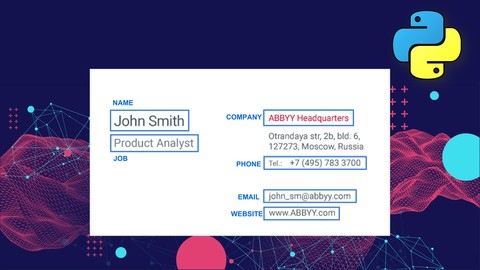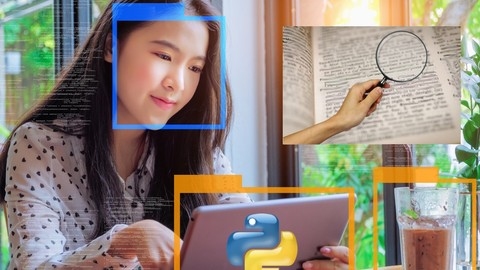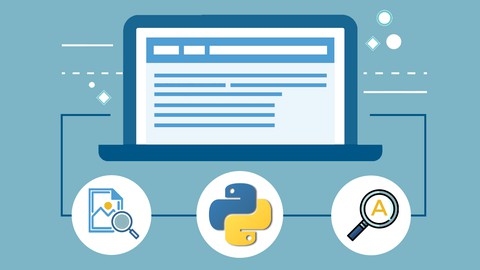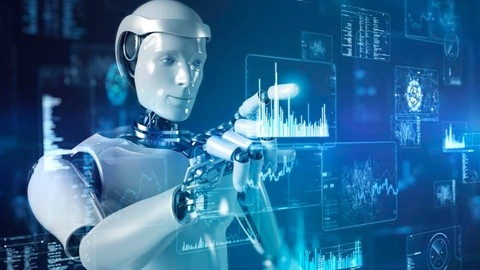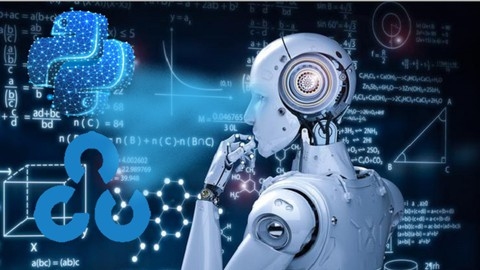Optical Character Recognition (OCR) is a fascinating field that bridges the gap between the physical and digital worlds.
By enabling computers to read text from images and documents, OCR unlocks a wealth of possibilities, from automating data entry and digitizing historical archives to powering innovative applications like real-time translation and assistive technologies for the visually impaired.
Learning OCR opens doors to exciting career opportunities in fields like data science, software development, and machine learning.
Finding a high-quality OCR course on Udemy that provides a comprehensive and practical learning experience can be challenging.
With numerous options available, you need a course that not only covers the theoretical foundations but also equips you with the practical skills and hands-on experience needed to build real-world OCR applications.
You’re searching for a course that combines clear explanations, engaging exercises, and relevant projects to solidify your understanding and empower you to confidently tackle OCR challenges.
After careful consideration and review, we’ve identified the Computer Vision: Python OCR & Object Detection Quick Starter course as the best overall OCR course on Udemy.
This course provides a solid foundation in OCR, covering essential concepts, popular libraries like Tesseract and OpenCV, and practical applications like object detection.
It’s a great starting point for beginners and those looking for a quick introduction to the field.
However, the world of OCR is vast and diverse, and there are many other excellent courses available on Udemy that cater to specific learning styles and goals.
Keep reading to explore our curated list of top OCR courses, covering topics ranging from basic text recognition to advanced deep learning techniques and real-world project development.
Computer Vision: Python OCR & Object Detection Quick Starter
You’ll start by setting up your development environment using Anaconda, a powerful tool for managing Python libraries, which will form the foundation for your computer vision projects.
The course then guides you through the essential basics of Python programming, equipping you with the language proficiency needed to effectively interact with computer vision tools.
Optical Character Recognition (OCR) is then introduced, demonstrating how to extract text from images using Tesseract, a powerful library with applications ranging from document analysis to understanding signage in images.
You’ll delve into the captivating world of Convolutional Neural Networks (CNNs) and learn how to leverage their power for image recognition.
The course covers a range of popular pre-trained models, including VGGNet, ResNet, Inception, and Xception, showcasing their applications in recognizing objects within images.
The course seamlessly transitions into the realm of object detection, exploring advanced models like MobileNet-SSD, Mask RCNN, and YOLO.
These powerful tools allow you to identify and locate objects within images and even videos, including real-time object detection using your webcam.
The course concludes with a discussion of YOLOv4, the latest version of the popular YOLO model, demonstrating its capabilities in object detection.
This course offers a solid foundation in computer vision, equipping you with practical skills in Python and popular libraries like OpenCV, Tesseract, and Keras.
While the course provides a strong introduction to the key concepts and tools, it’s important to note that it might not be suitable for those seeking in-depth exploration of specific models or advanced techniques.
For those seeking a deeper understanding of specific aspects of computer vision, exploring additional resources and specialized courses might be beneficial.
Intelligently Extract Text & Data from Document with OCR NER
You’ll gain hands-on experience with essential tools like Tesseract OCR and spaCy, mastering the art of extracting text and data from images using Python libraries like OpenCV and PIL.
The initial stages of the course focus on equipping you with the foundational knowledge needed for success.
You’ll learn how to set up your development environment, install the necessary packages, and prepare data for training your models.
The emphasis then shifts to the exciting realm of NER, where you’ll delve into the intricacies of spaCy, a powerful Python library for natural language processing.
You’ll learn how to build your own NER models, enabling you to identify and extract specific entities like names, locations, and dates from text.
This course extends beyond the basics, venturing into the realm of practical application.
You’ll utilize your acquired skills to build a document scanner web application using Flask, a versatile Python framework for web development.
You’ll master the design and implementation of a user-friendly interface, gain experience in handling image uploads, and seamlessly integrate your OCR and NER models, creating a polished and efficient user experience.
The course recognizes the importance of continuous improvement and provides you with valuable insights into enhancing the performance of your models.
You’ll explore advanced techniques like data preprocessing and model tuning, ensuring your creations achieve optimal accuracy.
The syllabus also delves into the potential of cloud platforms like AWS, GCP, and Azure, highlighting how they can be harnessed to host and scale your applications for wider accessibility.
YOLO: Automatic License Plate Detection & Extract text App
The course begins with the fundamentals, walking you through the installation of essential tools like Anaconda Python, OpenCV, and TensorFlow.
You’ll then learn how to prepare your data by labeling images using LabelImg and processing them for training.
The course delves into deep learning for object detection, where you’ll gain experience working with InceptionResnet V2 models and training them with TensorFlow 2.x.
You’ll use Tensorboard to track and analyze the training process, ultimately building a pipeline for object detection.
From there, you’ll dive into the realm of OCR, using Pytesseract to extract text from images.
The course explores the limitations of Pytesseract, challenging you to think critically about potential challenges.
One of the most valuable aspects of this course is the hands-on development of a Flask app.
You’ll learn how to integrate Bootstrap for styling, creating a web app that lets users upload images for license plate detection and text extraction.
Finally, you’ll tackle YOLO, a powerful deep learning model, building a real-time number plate recognition system.
The course teaches you to train YOLO on Google Colab, deploying it to extract text from license plates in real-time videos.
You’ll refine your code, create functions, and even build a web app using YOLO, culminating in a robust, working system.
Computer Vision - OCR using Python
This OCR course using Python is a comprehensive guide to mastering optical character recognition.
You’ll start with the fundamental concepts of OCR, learning about its architecture and its wide range of applications across industries.
The course doesn’t shy away from setting up your development environment, walking you through the process on both Ubuntu and Windows operating systems.
You’ll get a solid foundation in image fundamentals, learning about pixels, kernels, and image properties.
This prepares you for text detection techniques, where you’ll explore machine learning methods like noise removal and thresholding.
The course goes beyond traditional techniques, introducing you to powerful deep learning models like CTPN and EAST.
You’ll gain experience training these models on the ICDAR SIROE dataset, using Google Colab for convenient development.
You’ll delve into text recognition using established libraries like EasyOCR, PyTesseract, and Tesseract.
You’ll learn the ins and outs of Tesseract’s PSM and OEM modes, maximizing your text recognition accuracy.
The course takes your skills to the next level by introducing Natural Language Processing (NLP) concepts like Named Entity Recognition.
You’ll learn how to use libraries like Spacy for tasks like part-of-speech tagging.
The course shines with its five live projects, putting your acquired knowledge to the test.
You’ll tackle real-world challenges like number plate recognition, invoice processing, and business card recognition.
You’ll even delve into KYC digitization, applying OCR to a vital business process.
This combination of theoretical knowledge and practical projects provides a well-rounded learning experience, equipping you with the skills you need to excel in the world of OCR.
Optical Character Recognition (OCR) in Python
This OCR course in Python offers a comprehensive and practical approach to mastering text extraction from images.
You’ll begin with the fundamentals of OCR, exploring Tesseract, a robust open-source engine.
This section prepares you for basic text recognition, handling different languages, and navigating the intricacies of page segmentation and orientation detection.
The course seamlessly transitions to advanced image pre-processing techniques.
You’ll learn how to enhance image quality through grayscale conversion, thresholding, and morphological operations, all vital for achieving accurate OCR results in challenging scenarios.
Beyond standard text recognition, the course dives deep into EAST, a cutting-edge deep learning model specifically designed for handling real-world images, such as those captured by cameras.
This section expands your OCR skills to encompass natural scenes, empowering you to extract text from diverse visual environments.
The curriculum then takes you on a journey into building custom OCR models using datasets like MNIST and Kaggle A-Z.
You’ll gain hands-on experience in pre-processing data, constructing neural networks, training them, and meticulously evaluating their performance.
This comprehensive training will solidify your understanding of the inner workings of OCR systems.
Beyond static images, the course explores the exciting world of OCR in videos.
You’ll learn how to extract text from moving images, allowing you to apply OCR to dynamic content.
This is where you’ll tackle real-world projects like building a scanner for digitizing documents, reading license plates with impressive accuracy, and even performing complex text searches within images using natural language processing.
Finally, you’ll delve into the theoretical foundations of artificial neural networks and convolutional neural networks, the technologies that power modern OCR systems.
This section provides a robust understanding of the underlying principles behind OCR, equipping you with a comprehensive knowledge of this rapidly evolving field.
Optical Character Recognition (OCR) MasterClass in Python
This OCR MasterClass in Python promises a comprehensive journey into the world of text extraction, equipping you with both traditional and cutting-edge Machine Learning techniques.
You’ll start by getting comfortable with the powerful Python Pillow library, commonly known as PIL Fork.
Imagine yourself manipulating images – resizing for social media, adding watermarks, or even cleverly cropping out unwanted sections.
You’ll learn to make your images ready for OCR with the help of OpenCV, a library designed for computer vision.
Picture yourself preparing scanned documents for text extraction, making them clean and clear.
You’ll explore techniques like image inversion, binarization, and erosion and dilation, each one playing a crucial role in improving your OCR results.
Next, you’ll dive into Pytesseract, a library specifically designed for OCR.
You’ll become confident in extracting text from images, pinpointing text boxes, and even matching templates for specific types of text.
This section is packed with practical skills that you can put to use immediately.
Finally, you’ll learn the basics of Machine Learning, focusing on the KNN algorithm, and see how it can be used to boost your OCR accuracy.
You’ll even learn to build your own custom OCR models!
This approach combines the best of both worlds: traditional OCR methods with the power of Machine Learning.
You’ll emerge from this course with a versatile skill set, ready to tackle a wide range of OCR challenges.
Learn Python & OpenCV for Computer Vision Deep Learning, OCR
You’ll start with a robust foundation in Python, covering core data types, operators, functions, and modules.
You’ll also learn to utilize powerful libraries like NumPy, Pandas, Matplotlib, and OpenPyXL for data analysis and visualization.
The course then delves into OpenCV, a library designed for computer vision tasks.
You’ll learn to manipulate images, remove noise, detect edges and contours, and even work with live video feeds from a camera.
The course effectively teaches you how to implement OCR using the EasyOCR library, allowing you to extract text from images.
You’ll further solidify your learning through hands-on projects.
You’ll engage in web scraping using BeautifulSoup and regular expressions (RegEx), learn to send emails with the Flask framework, extract text from PDF documents, and even track objects in real-time using OpenCV.
These projects provide practical application and a portfolio of work showcasing your newfound skills.
Python OCR: Learn Optical Character Recognition from Scratch
This course is your gateway to mastering Optical Character Recognition (OCR) using the power of deep learning.
You’ll learn to build OCR models from scratch, utilizing Python and the popular Keras library.
The curriculum emphasizes practical application, taking you step-by-step through the entire process, from data preparation and model training to evaluation and prediction.
You’ll become adept at leveraging Google Colab, a free online platform that lets you execute Python code, including complex deep learning models.
The course seamlessly integrates Google Colab with Google Drive, making it easy to store and access your project files.
You’ll learn to pre-process your data, split it for training and testing, and gain valuable experience in visualizing datasets.
Building on this foundation, you’ll delve into the world of CAPTCHA recognition, using deep learning techniques to create a model that can decipher these common security measures.
The course equips you with the skills to evaluate your model’s performance, learn how to load pre-trained weights for faster training, and confidently make predictions on new images.
